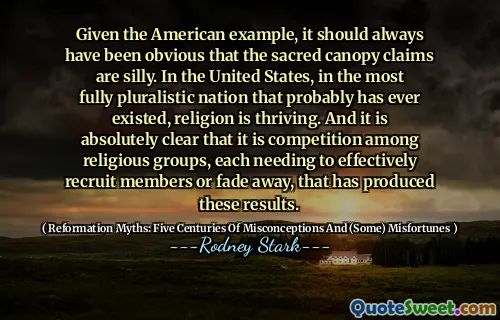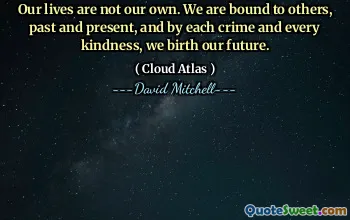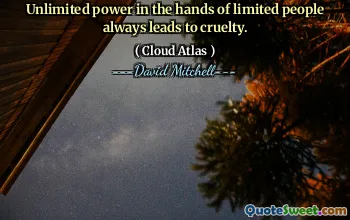
Given the American example, it should always have been obvious that the sacred canopy claims are silly. In the United States, in the most fully pluralistic nation that probably has ever existed, religion is thriving. And it is absolutely clear that it is competition among religious groups, each needing to effectively recruit members or fade away, that has produced these results.
The quote by Rodney Stark highlights an intriguing paradox about religion in the United States. Despite many claims that religion serves as a sacred canopy providing moral guidance, stability, and societal cohesion, Stark points out that in the American context, this canopy is arguably a misinterpretation. Instead of serving as a unified, unquestioned system of beliefs, religion in the U.S. functions more like a competitive marketplace. Various religious groups and denominations actively vie for followers, necessitating continual recruitment efforts and innovative worship experiences to survive and grow. This competition fuels religious diversification and resilience, allowing faith traditions to adapt and evolve in response to changing societal needs. Stark’s observation challenges the notion that religious authority is inherently sacred or above critique; instead, it emphasizes a pragmatic view where religious success hinges on survival tactics similar to businesses in a marketplace—marketing, outreach, and community engagement. Such a perspective suggests viewing religion as a social institution shaped by human agency and market dynamics rather than solely spiritual or divine mandates. This insight has profound implications for understanding religious pluralism, the growth of new religious movements, and the decline of traditional dominant churches in the U.S. It also underscores the importance of considering religious diversity not solely as a matter of faith but as a complex interplay of societal, cultural, and competitive factors that sustain a vibrant religious landscape. Stark’s analysis invites us to see religion as an adaptable social phenomenon, thriving precisely because it navigates a competitive environment, rather than being hindered by the supposed sacred canopy theory.







